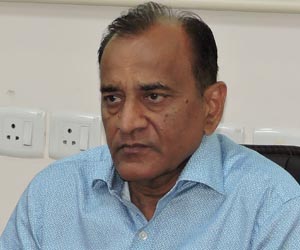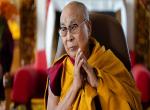Of late, the Modi government has made a renewed push to further its relationship with two important regional groupings, the European Union (EU) and the African Union (AU). While New Delhi has been constantly engaging with several individual member-countries of the two groups, a focus on the Unions helps to expand its leverage with many countries in one stroke, concentrate on shared mutual interests, and discuss shared concerns as well.
Although bilateral ties between the EU and India are 62-years old, it is during Prime Minister Narendra Modi’s terms that they have picked pace, with both sides realising that the full potential remains to be exploited. There are issues over which both sides can work alongside more forcefully. For example: security, climate change, defence, cultural exchanges etc. Trade relations, however, are for the moment central to taking the relationship to the next level.
Only recently, the EU overtook the US to become India’s largest trading partner. Data provided by the EU’s official website tells the story. The EU accounted for €124 billion worth of trade in goods in 2023 (12.2 per cent of total Indian trade), topping the US (10.8 per cent) and China (10.5 per cent). The EU is the second-largest destination for Indian exports (17.5 per cent of the total) after the US (17.6 per cent). Trade in goods between the EU and India has increased by almost 90 per cent in the last decade. Trade in services between the EU and India reached €50.8 billion in 2023, up from €30.4 billion in 2020.
A report by the Jacques Delors Institute highlights what the two can offer each other. The EU should take steps to increase its merchandise export to India (while the exports have increased from $12.6 billion in 2000 to $46.3 billion in 2021, the rate of increase is below the potential). More product categories can be added to the export mix (just 20 product categories make up 90 per cent of the total EU goods exported to India). The share of EU exports to China (10 per cent) correspond to approximately half of China’s weight in the global economy (19 per cent), but EU exports to India (at two per cent) are only a quarter of India’s weight (7 per cent). The key, as the report says, to enhancing trade is the removal of market access barriers.
On its part, India can also look at the untapped potential and act accordingly. The Jacques Delors Institute’s report says that EU imports from India more than tripled in the 2000s, but increased at a slower rate—from $44 billion to $54 billion between 2010 and 2019. Since 2010, India’s share in the EU’s import basket has stagnated, compared to the growing share of EU imports that come from China. India offers opportunities for the diversification of imports in sectors such as men’s clothing, organic chemicals, and motorcycles. Though it is unlikely to replace China as a major source of imports by 2030, already Indian exports of telecommunications and IT services to the EU surpasses that of China.
On shared concerns, both the EU and India are wary of China’s expansionist mindset on both land and the seas. The deepening relationship between China and Russia worries the EU, which sees India as an important factor in containing the fallouts, given that India shares a warm and decades-tested friendship with Russia.
A number of steps have been taken in recent years to strengthen the India-EU partnership. In 2020, the EU launched the EU-India Strategic Partnership: A Roadmap to 2025, but there have been only a few meetings. Currently, several members of the EU are disappointed by what they see as India’s neutrality and its refusal to take Ukraine’s side in its war against Russia. But Prime Minister Modi has made it clear that India has not been neutral; instead, it has taken the side of peace through negotiations. Anyways, it is unlikely that the vexatious issue will be an obstacle to furthering the India-EU relationship.
The India-Africa partnership got a major boost during the G20 meeting in India in 2023, when it was announced that African Union (AU) would become a permanent member of the G20 grouping. India is keen to ramp up its presence in Africa. Already, it is Africa’s third-largest trade partner after China and the EU. According to a GIS report, Indian exports to Africa exceeded imports in 2022-23, for the first time in this century. While the exports largely consist of pharmaceutical and petroleum goods, imports are of crude oil and other raw materials.
There are several reasons for India’s renewed attention to the AU. Among them, it wants to compete with China’s growing economic footprint in the African region, and win over the support of AU countries for its diplomatic initiatives in various areas—such as climate change, better representation of the developing countries in international fora such as the United Nations, and more. Apart from that, African Union members and India have shared recent histories and challenges. Both have emerged after great struggles from long centuries of colonial rule, and are today faced with the threat of terrorism, both from within and outside. They are also keen to ramp up their development and economic growth.
Africa has a significant number of Indian diaspora (something that neither Europe nor China has)—according to some estimates, the Indian diaspora across Africa is three-million strong. The diaspora has played a major role in promoting people-to-people contacts and cultural diplomacy. The challenges that Africa faces is something that the Indian people connect with, and similar is the case vice versa.
In 2018, Prime Minister Modi, during his address to Uganda’s parliament, had enunciated ‘Ten Guiding Principles for India-Africa Engagement’. They included digital economy, less-protectionist trade and open markets. As Prime Minister, he has paid official visits to several African countries besides Uganda. They include Rwanda (the first Indian Prime Minister to do so) and South Africa. He emphasised on the concept of Vasudhaiva Kutumbakam and assured them that India was their trusted friend in all times, besides taking forward the bilateral cooperation in various areas.
Africa can also play an important role in India’s emergence and consolidation as the leader of the Global South. The India-Africa Forum Summit (IAFS) is the key institutional mechanism by which the two entities can take their engagements deeper and broader. The IAFS meet was held in 2015 in New Delhi. A great deal has changed globally since then, and the new situation needs a fresh infusion of dynamism in the India-African Union relationship.
(The paper is the author’s individual scholastic articulation. The author certifies that the article/paper is original in content, unpublished and it has not been submitted for publication/web upload elsewhere, and that the facts and figures quoted are duly referenced, as needed, and are believed to be correct). (The paper does not necessarily represent the organisational stance... More >>
Image Source: https://www.pmindia.gov.in/wp-content/uploads/2023/09/H20230910138624.jpg











Post new comment